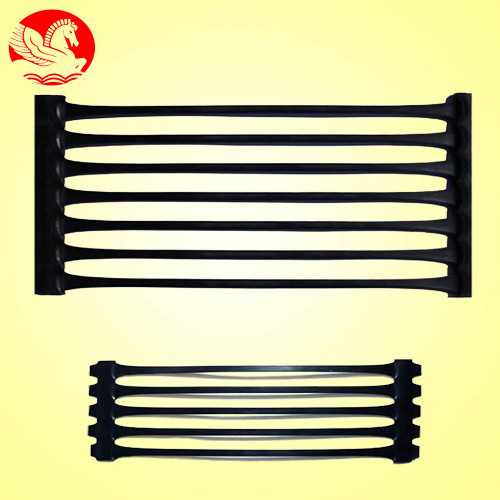In the realm of geosynthetics, uniaxial geogrids are a versatile and crucial component for various construction and civil engineering projects. This blog will explore uniaxial geogrid specifications, highlight the key differences between uniaxial and biaxial geogrids, and emphasize the advantages of using uniaxial geogrids in infrastructure and soil stabilization.
Uniaxial Geogrid Specifications
Uniaxial geogrids are engineered materials made from high-density polyethylene (HDPE) or other polymers. These grids are characterized by their one-directional strength, typically in the longitudinal direction. Uniaxial geogrid specifications include:
Material: High-quality HDPE is commonly used due to its durability, resistance to environmental factors, and corrosion resistance.
Aperture Shape and Size: The aperture shape can vary from hexagonal to rectangular, and the size influences the grid's performance.
Tensile Strength: Uniaxial geogrids are designed with high tensile strength in the primary load-bearing direction.
Roll Dimensions: These grids are available in various widths and lengths to accommodate different project requirements.
The primary distinction between uniaxial and biaxial geogrids lies in their directional strength. Uniaxial geogrids offer strength in one direction (typically longitudinal), whereas biaxial geogrids provide strength in both longitudinal and transverse directions. This key difference impacts their specific applications:
Uniaxial Geogrids: These are ideal for projects where forces primarily act in one direction, such as reinforcing retaining walls, slopes, and embankments.
Biaxial Geogrids: Biaxial geogrids are suitable for projects where forces act from multiple directions, making them versatile for stabilizing pavements, road bases, and parking lots.
Advantages of Uniaxial Geogrids
Uniaxial geogrids offer several advantages that make them a preferred choice in many applications:
High Tensile Strength: Uniaxial geogrids are engineered for exceptional tensile strength in their primary direction, making them reliable for projects with one-directional force requirements.
Cost-Effective: These grids are often more cost-effective than biaxial geogrids, making them an economical choice for various construction projects.
Easy Installation: Uniaxial geogrids are straightforward to install, reducing labor costs and project timelines.
Long-Term Durability: Made from robust materials, they are resistant to environmental stressors and provide long-lasting performance.
Soil Stabilization: Uniaxial geogrids play a vital role in soil stabilization, reinforcing and enhancing the structural integrity of various applications.
Conclusion
Uniaxial geogrids, with their specific directional strength, are a valuable tool in civil engineering, construction, and infrastructure projects. Their high tensile strength, cost-effectiveness, and ease of installation make them an ideal choice for applications that require reinforcement in a single direction.
By understanding uniaxial geogrid specifications and recognizing the differences between uniaxial and biaxial grids, engineers and project planners can make informed decisions about the most suitable geogrid for their specific project needs. Uniaxial geogrids continue to be an indispensable resource for soil stabilization, ensuring the durability and safety of various structures and landscapes.

Comments
Post a Comment